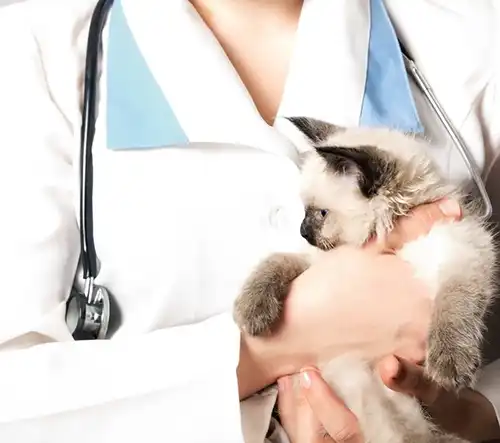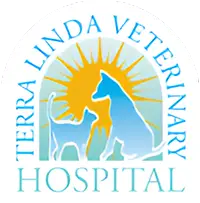Do your pets get overjoyed at dinnertime? We’re guessing the answer to that is yes. While our patients’ perspectives on most topics differ greatly, the bulk of them agree on one thing: they all enjoy meals and snacks. Filling Fluffy and Fido’s bowls isn’t difficult, but deciding what to put in them could prove tricky. This article features advice on pet feeding from a local San Rafael, CA veterinarian.
Making Sense of Pet Food Labels
One of the best things you can do is develop the habit of reading food labels. This is when things become a little complicated. Many companies employ deceptive marketing strategies to make their items appear better than they are.
AAFCO-approved foods must have a few key pieces of information on their labels.
- Brand and product names.
- Name of animal for which the meal is intended (dog, cat, etc.).
- Quality Statement
- List of ingredients, feeding instructions, and analysis. This is a huge one because it shows the percentages of the nutrients mentioned previously. While some elements may be specified with a maximum percentage and others with minimums, the list must be presented in a precise order and in measured units.
- A statement of nutritional sufficiency that “indicates that the food is complete and balanced for a particular life stage, such as growth, reproduction, adult maintenance or a combination of these, or intended for intermittent or supplemental feeding only.”
- Manufacturer or distributor’s name and address
Reading Ingredients
The ingredient list can be difficult to navigate, thanks in large part to labeling rules. For example, if an ingredient appears in the name of a product, it must account for at least 95% of the item. However, there are methods companies use to get around this. Something using the word ‘flavor’ just has to have roughly 3% of that ingredient.
As with human foods, pet food ingredients must be listed proportionally, meaning the first thing listed takes up the largest percentage, and so on. Look for things that have meat, fish, or poultry listed first and most frequently.
Which Pet Food Ingredients Should I Avoid?
One of the most significant factors to consider? What exactly is in your pet’s food? Many varieties of human and pet diets are highly processed these days, and they may contain fillers, preservatives, and other ingredients that aren’t exactly great. These may be more than just subpar; some may be downright unhealthy.
Here are a few items you should avoid in your pet’s food:
Artificial Food Coloring: Dyes will not improve your pet’s health. They are typically used to make the finished product appear more appealing and uniform to humans. Pets, of course, don’t care what their food looks like. Red 40, Yellow 5, and Yellow 6 are especially problematic. They all contain benzidine, a recognized carcinogen.
Rendered Fat: Rendered fat may sound sensible. However, it is frequently prepared by combining and boiling the leftover portions after animals are processed for meat. Unfortunately, some of the animals could have been ill or infected.
Propylene Glycol: Propylene glycol, which is commonly used in treats for both Fido and Fluffy, helps stabilize foods. It can induce adverse effects if used in excessive quantities. It has also been outlawed in Europe, which is cause enough for alarm in and of itself.
Thickening Agents: While thickening agents are unlikely to be among the most harmful ingredients, they are nevertheless not without drawbacks. Carrageenan, guar, xanthan, and cassia gum are some of the most often utilized. They also offer features such as stability and texture. However, some studies suggest that they may be carcinogenic.
Corn syrup/high fructose Corn Syrup: If you’ve developed the habit of reading food labels, you may have noticed that corn syrup is now found in practically everything. It has been associated with a variety of human health problems, including heart disease, diabetes, and fatty liver disease. If it’s bad for us, it’s probably not great for Fido and Fluffy, either.
Artificial Preservatives: Some of the most commonly used ones include butylated hydroxyanisole (BHA), butylated hydroxytoluene (BHT), and ethoxyquin. These can be found in a variety of wet and dry foods, as well as treats.
Contact your San Rafael, CA veterinarian for further information.
How Can I Choose the Right Food?
The first thing we would recommend is that you speak with your veterinarian. While we may go over some basics here, it is vital to remember that each pet is unique. Several factors influence this decision, including your pet’s age, health, breed, and lifestyle, as well as any medical concerns they may have. An underweight Pomeranian will have quite different dietary needs than a plump Lab, and a young St. Bernard will require different food than an elderly Chihuahua.
Aside from that, stick to products that have received AFFCO accreditation. AFFCO, or the Association of American Feed Control Officials, is a non-profit organization that monitors pet food ingredients, production procedures, and quality standards. They work to guarantee that pet food fulfills the quality requirements required to keep your pet healthy, as well as that the nutrients are in the proper amounts. A seal of approval from them indicates that the brand has been thoroughly assessed.
The AFFCO divides pet food components and nutrition into six categories.
- Water: Naturally, your pet should always have access to fresh water. Water is also an ingredient in pet foods. The moisture content of your pet’s food might affect how well they absorb the nutrients. Kitties are an excellent example of this. Cats’ natural foods include mice and birds. Fluffy also consumes her prey raw, therefore her normal diet includes a lot of water.
- Carbohydrates (with fiber): Carbohydrates give dogs energy in the form of glucose, which is essential for fueling those tail wags. Cats, on the other hand, require no carbohydrates in their diet. Fluffy will still obtain traces amounts of carbs and fiber in the wild from her prey. However, carbs should not be the primary item in a dog or cat’s diet.
- Vitamins: Vitamins help many of your pet’s organs and systems function properly. Distinct vitamins have distinct functions. Vitamin A, B, C, D, E, iron, zinc, and calcium are all vital nutrients for pets. We won’t go into detail about all of them, save to say that vitamins must be added in the proper proportions. Neither too much nor too little is safe.
- Minerals: Minerals are also important for your pet’s health since they help your pet’s internal systems function properly. Dogs and cats require iron, zinc, copper, and magnesium.
- Fat: Fat gives Fido energy, keeps his coat and skin healthy, and decreases inflammation. It is also important for helping pets absorb nutrition and produce hormones, and provides insulation and protection. Linoleic acid, flaxseed, and fish oils are some of the fat sources that may be found in pet foods. Fatty acids, including omega-3 and omega-6 acids, are essential for pets.
- Protein: Protein is essential for pets’ cartilage, tendons, ligaments, skin, fur, claws, muscle, and even blood cells. As it breaks down, it produces important amino acids that are necessary for your pet’s health and survival. Animal-based proteins commonly used in pet food include chicken, lamb, fish meal, beef, and eggs. Plant-based proteins include corn gluten meal, soybean meal, and beans.
Be careful to consult your veterinarian for precise recommendations on what to feed Fido and Fluffy. That involves receiving advice on topics such as food sizes and feeding times.
Book An Appointment At Our San Rafael,CAa Pet Clinic
Have you got any questions or worries concerning your pet’s diet? Are you wondering what to feed your pet? Contact us, your local San Rafael, CA pet hospital, at any time.







!Social Media Icons